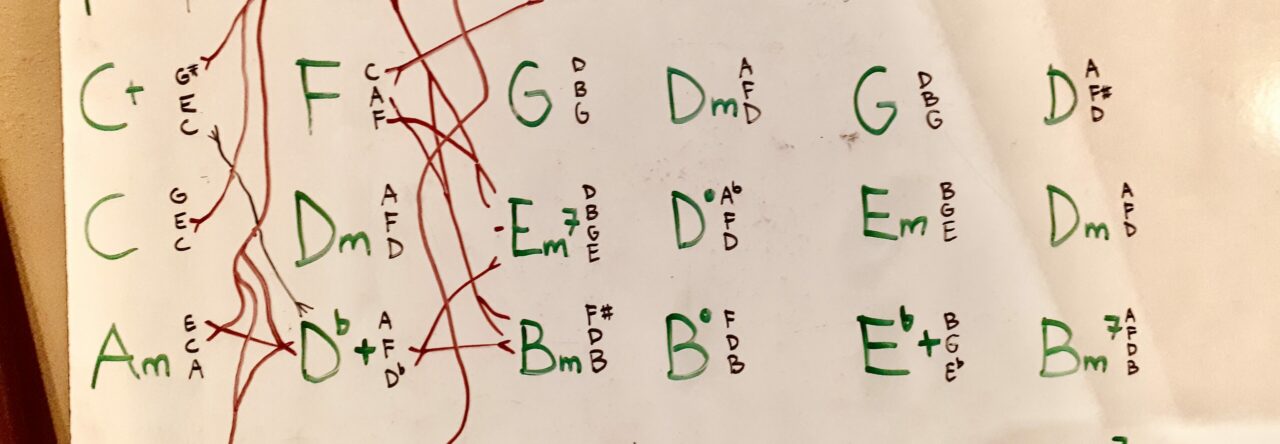A deep dive into simple but foundational chord progressions—those relying on what are sometimes called the “primary chords”: the I, the IV, and the V.
Age Range: 14 (Grade 9) and up.
Learning Activity Number: 2.
Learning Objectives: Students will be become familiar with I-IV-V chord progressions and gain a theoretical and a felt understanding of how they “work” in songs. Students will be better able to:
- recognize I-IV-V chord progressions in songs,
- learn I-IV-V songs by ear, and
- produce their own chord progressions using the I, IV, and V chords.
Universal Design for Learning Principles: Preparatory instruction is audio-visual, with captions, different playback speeds, and infinite repetition available to all learners. It explains specialized terms.
Resources/Materials: Students will need the following:
- internet access to view the study materials on YouTube and make their online submissions,
- access to their chordal instrument and some privacy for figuring out and playing songs, and
- basic video recording and processing capabilities to share the results of their work.
Learning Activity Outline
Introduction:
Instructional Content:
Activity: View and, as needed for understanding, review (at your own preferred speed, and with subtitles if desired) the above 2 instructional videos. Then find and learn to play three different existing I-IV-V songs—songs (in any genre[s]) with chord progressions relying exclusively on the I, IV, and V chords. Then write your own two I-IV-V progressions. Each song pattern must be at least slightly different from the others. Make a video of you playing a verse from each of them, and reflect—orally in the video, or in an accompanying written document—on the differences between these five chord progressions and the feelings they elicit in you.
Assessment: Students’ video and reflection submissions will provide ample evidence of understandings and misunderstandings about chord progressions and the basic uses of the I, IV, and V chords (as outlined in the instructional content). Students’ work will also show their ability to apply their understanding in the creation of original chord progressions.
